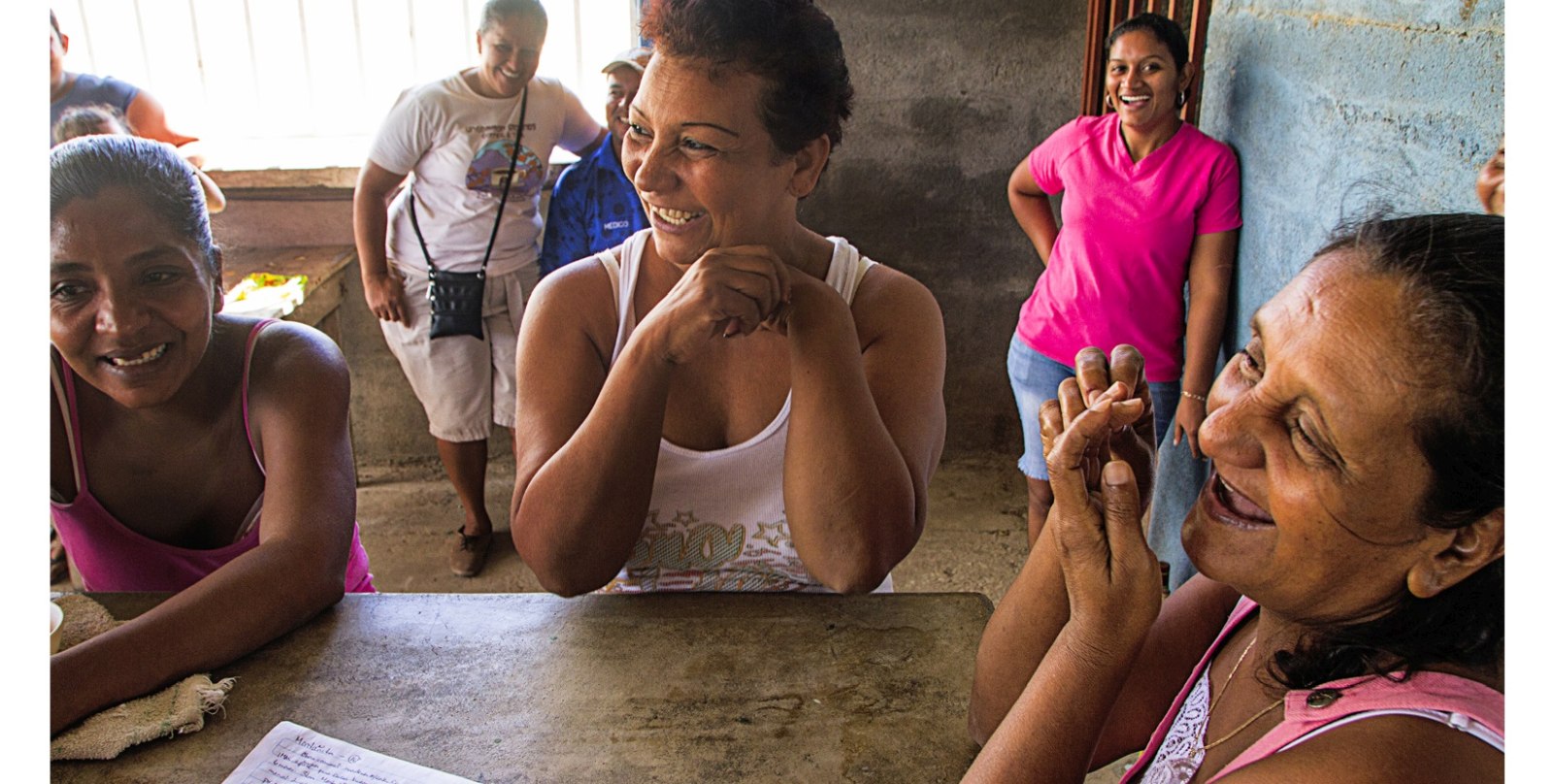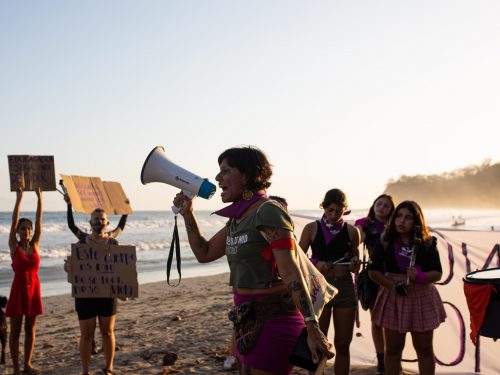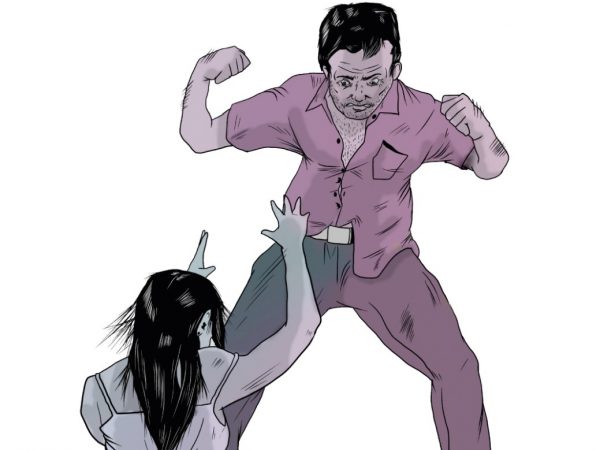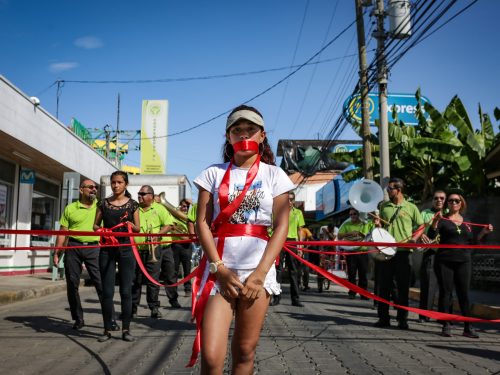
March 8 is International Women’s Day and The Voice wants to honor the women in the Canton of Nicoya who have organized in ways that have benefited them, their families and their communities. We can’t include them all, as we’d like to, but we believe these three brief accounts represent the new reality of these tireless fighters, who work from sunrise to sunset to be able to watch their children as well as their communities grow.
Traditional roles designate the man as the head of the household and relegate the woman’s place to the kitchen, but reality nowadays is quite different as many women find themselves raising children alone, finding ways to fend for themselves and their families. The Voice interviewed members of three groups of women who have found strength amongst themselves to accomplish more than they might on their own.
Getting Things Done in La Montañita
About 10 minutes north of Nicoya, past the cemetery of San Antonio, a small community of about 150 people is nestled in the mountains of La Montañita. Despite its small size, the community has a new ticket booth in front of the bull ring, a community kitchen, well-maintained grounds and flower-lined roads, all thanks to the women of the community.
A couple of years ago, with the support of the community´s development association, a women’s group was formed. With financial assistance from the Mixed Institute of Social Assistance (IMAS) Manos a la Obra (Hands to work) program, they bought tools for gardening and road maintenance and received a monthly stipends for six months for their labor. In the mornings, the 16 members work with shovels and machetes to maintain the church, the community hall, the fairground and the roads. In the afternoon, they get together in the community hall to do crafts or to learn English with the help of Intercultura, The Samara Language School.
They do it “for love of the community,” according to Vera Cruz, president of the association. They have held fundraisers, selling tortillas and other food, and in time, they hope to sell the crafts made by the women “for their own subsistence because it’s a poor community.”
As the women gather with us in the community hall, they display a table full of painted jars, baskets and other crafts that they have made, shy about their work and reluctant to express themselves but with a little encouragement they begin to open up.
Catalicia Chavarria Jimenez, age 49, has six children, ranging in age from 18 to 26, two of whom still live with her, and five years ago she was widowed when her husband died from kidney failure. She stayed home a lot depressed, but when the women’s group initiated, she joined and says the group has changed her and helped her to socialize more with others. “I feel sick when I don’t come to work,” she remarked.
William Silva Silva, vice president of the association, whose wife is a member of the women’s group, recognized that the woman have made significant contributions to the community and pointed out that there are many single mothers and the financial support of the men in the community is limited because most of them have occasional or seasonal jobs.
With the amount of contributions that the women have made to the community of La Montañita, even the men joke that they can just stay home.
Harvesting Seeds and Protecting the Wetlands in Corral de Piedra
In Corral de Piedra, a community of about 90 inhabitants located between Coralillo and Quebrada Honda, a small group of women harvest seeds from local trees, drill holes in them and use them to make bracelets, earrings, necklaces and key rings. In addition to jewelry, they also do embroidering and make pillow covers, curtains, pillowcases and bedspreads. Their creations are sold locally, at expositions in San Jose, as well as internationally, in Finland, Canada and, the United States.
Xinia Guevara, president of the group, is a single mother with five children and no child support. She related that the group began informally 5 years ago with 16 women. “We started as a hobby and afterward we realized that it was useful to us for funds,” she said.
Gradually the group has diminished, but four women still faithfully meet each week and are looking into incorporating more women back into the group and legally registering the group.
“What one knows, they teach to the others,” Guevara explained, noting that each woman has their strength. They received training from a woman in Heredia in how to make a pair of earrings, a necklace and a bracelet, and since then they have developed their own designs. When they see something they like, they study it carefully to see how it was made to later make something similar. “From their one soars with the imagination,” she said.
These women made community bathrooms and help maintain the plaza. They are also looking out for their community’s greatest treasure: the wetlands where many birds migrate annually. In conjunction with MINAE (the Ministry of Environment), they watch out for fires in the summer, illegal fishing in the winter and look after a nest of Jabiru, a protected species of stork that is the tallest flying bird in Central and South America. They also make traditional foods like cuajadas (a type of cheese) and rosquillas to sell, receive tourists visiting the wetlands and receive English courses.
Encouraging Female Entrepreneurs to Dream in San Vicente
Floribeth Grijalba Acosta, now 61 years old, is a retired teacher and an active community leader. She has been married for more than 40 years, since she was 19 years old, and has three grown children. She served as a municipal council member for 12 years and served as president of the council in 1994. Now she is a member of the development association and president of a women’s group in San Vicente, a community of about 900 people located 17 kilometers from Nicoya along the highway toward Santa Cruz.
Grijalba said she saw the need and the difficulty that women face and wants to help them. “We don’t have anyone that helps us, that opens our minds, that expands our horizons,” she said.
Currently 12 women participate in the group, which was formed in September of 2011 and is focused on community development, environmental conservation and employment, helping them succeed as individuals in starting businesses, for example applying for assistance through INAMU, the National Institute for Women. Grijalba mentioned that some of the women are developing plans for businesses such as laundry, textiles and pastries.
The women also received support from IMAS for community work such as reforestation, maintaining the riverbeds, filling holes in the streets and cleaning park areas. In addition, they painted the community hall and the school and repaired school desks and chairs.
To help the women progress, they are also hosting an English course for the women, with weekly sessions of three or four hours each. For the past year, Ana Lucia Ruiz Grijalba has been participating in the English course, learning the basics like greetings and vocabulary for different daily situations. She hopes learning English will help her obtain a job. “It’s a way of acquiring knowledge and getting ahead,” she expressed.
Ruiz, age 27, studied business administration at Universidad Latina but hasn’t been able to find a job. She has never worked outside of the home, where she cares for her 8-year-old daughter and 65-year-old mother. Her husband works in agriculture. Ruiz describes the family incomes as so-so, neither so good nor so bad. With encouragement from the group to start their own businesses, Ruiz is also thinking about the possibility of opening a book store or bazaar, something that the town does not have.
“We have to dream,” Floribeth Grijalba affirmed. This is the message she hopes to transmit to other women. “Dreaming doesn’t cost anything. Life is a dream, but dreams become reality. We can dream.”







Comments